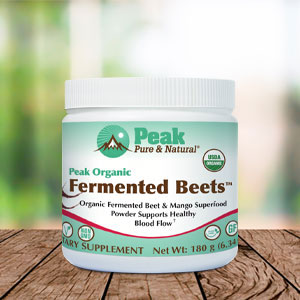Get Easy Health Digest™ in your inbox and don’t miss a thing when you subscribe today. Plus, get the free bonus report, Mother Nature’s Tips, Tricks and Remedies for Cholesterol, Blood Pressure & Blood Sugar as my way of saying welcome to the community!
3 ways to improve your carbon footprint and your health

Most of us would like to think that the food we buy each time we go to the grocery store isn’t just good for our health, but also our wallets and the environment. But determining how to reduce the carbon footprint of our food can seem challenging, if not impossible.
After all, while we know that switching to a vegetarian or vegan diet can help lessen greenhouse emissions, embracing those dietary restrictions may not be realistic or even healthful for everyone.
In fact, studies have found that vegans face three common deficiencies that can lead to weak bones. And both vegans and vegetarians may live with a higher risk of stroke.
Luckily, you don’t have to go full vegan to eat in a way that supports the health of our environment.
That’s because researchers from the American Chemical Society have honed in on three ways that Americans can not only reduce the carbon footprint of their food choices — without making drastic dietary changes — but can also do their health a big favor at the same time…
Big changes, minimal effort
You see, getting food from the farms that grow it to each of our plates contributes to a sizeable portion of global greenhouse gas emissions. Emissions result from growing, rearing, farming, processing, transporting, storing, cooking and disposing of the food you eat — and that contributes to your carbon footprint.
Some of the biggest offenders are animals since they’re just not that efficient at converting the plants they eat into energy.
This means that meat and dairy products result in higher emissions and have a larger carbon footprint than fruit, vegetables and grains.
It’s a fact that has led past researchers to simply recommend cutting out meat. But as we talked about, that’s a recommendation that many of us just can’t get behind due to either our food preferences or health issues.
So to find a better way to protect the environment each time we buy food, the ACS researchers analyzed the actual groceries purchased by over 57,000 U.S. households over a one-year period.
From that, they were able to identify the hotspots of carbon emissions and recommend simple changes that don’t mean giving up that juicy steak.
All in all, the team found that a full 71 percent of us could take steps to decrease our food carbon footprint, simply by following these three suggestions:
- Cutting out foods with high caloric content and low nutritional values (like ultra-processed foods) would result in a 29% reduction of the total potential emissions, while also potentially improving health outcomes. Here’s some guicance on selecting food based on nutrient density.
- Buy less savory bakery products and ready-made foods. This recommendation is based on the fact that while these foods have a relatively small carbon footprint, we tend to eat a lot of them, which can add up to significant emissions.
- If you have a small household of just one or two people, buy less food in bulk quantities, since you probably find yourself throwing out far too much food.
Good for the environment, good for your health
It’s easy to see how simply employing one or all of those recommendations won’t just reduce emissions and your food’s carbon footprint, but can also improve your health.
Those high-calorie, low-nutrition foods tend to be packed with sugar, which is linked to everything from high cholesterol to cancer.
And of course, cutting back on baked goods can offer numerous benefits that allow you to conquer many common health conditions.
Finally, by avoiding ready-made foods and eating freshly prepared meals at home, you can avoid the dangers found in food packagings, such as lurking perfluoroalkyl and polyfluoroalkyl chemicals.
So overall, it’s a win-win for you and the planet.
And when it comes to your wallet, you’ll find these recommendations can also help you eat healthy without breaking the bank (click to see all 8 recommendations).
Editor’s note: Did you know that when you take your body from acid to alkaline you can boost your energy, lose weight, soothe digestion, avoid illness and achieve wellness? Click here to discover The Alkaline Secret to Ultimate Vitality and revive your life today!
Sources:
Three ways to reduce the carbon footprint of food purchased by US households — ScienceDaily














